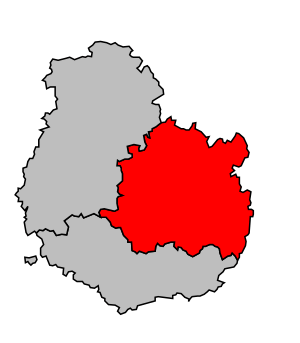Arrondissement of Dijon facts for kids
Quick facts for kids
Arrondissement of Dijon
|
|
|---|---|

Location of Dijon in Côte-d'Or.
|
|
| Country | France |
| Region | Bourgogne-Franche-Comté |
| Department | Côte-d'Or |
| Communes | 228 |
| Prefecture | Dijon |
| INSEE code | 211 |
| Area | |
| • Total | 3,049 km2 (1,177 sq mi) |
| Population
(2014)
|
|
| • Total | 373,574 |
| • Density | 122.523/km2 (317.33/sq mi) |
The arrondissement of Dijon is a special kind of area in France, like a district. It's part of the Côte-d'Or department, which is in the Bourgogne-Franche-Comté region. The main city and capital of this arrondissement is Dijon. Dijon is also the "Prefecture" of the whole department, meaning it's the administrative center.
Contents
What is the History of Dijon Arrondissement?
The Dijon arrondissement was created a long time ago, on February 17, 1800. It was one of the first arrondissements in the Côte-d'Or department when these areas were first set up in France.
Where is Dijon Arrondissement Located?
The Dijon arrondissement is in the northeast part of the Côte-d'Or department. It covers an area of about 3,049 square kilometers (which is about 1,177 square miles).
It's the most populated arrondissement in the Côte-d'Or department. In 2014, about 373,574 people lived there. This means it has a population density of about 122.5 people per square kilometer.
The Dijon arrondissement shares its borders with several other areas:
- To the north, it borders the Haute-Marne department.
- To the northeast, it borders the Haute-Saône department.
- To the southeast, it borders the Jura department.
- To the south, it borders the Beaune arrondissement.
- To the west, it borders the Montbard arrondissement.
How is Dijon Arrondissement Organized?
The arrondissement of Dijon is made up of smaller areas called "communes." There are 228 communes in total within this arrondissement.
What are Cantons?
Cantons are like smaller administrative divisions in France. They used to be direct subdivisions of arrondissements. However, after a change in how things are organized in France, cantons can now include communes that belong to different arrondissements.
In the Dijon arrondissement, there's one canton called Nuits-Saint-Georges where not all its communes are part of the Dijon arrondissement. Some of its communes are in the Beaune arrondissement.
What are the Main Communes?
The arrondissement of Dijon has many communes, but some are much larger than others. Here are the communes with the most people living in them:
| INSEE Code |
Commune | Population (2014) |
Canton | Intercommunality |
|---|---|---|---|---|
| 21231 | Dijon | 153,668 | Dijon-1, Dijon-2, Dijon-3 Dijon-4, Dijon-5, Dijon-6 |
Dijon Métropole |
| 21166 | Chenôve | 14,165 | Chenôve | Dijon Métropole |
| 21617 | Talant | 11,346 | Talant | Dijon Métropole |
| 21171 | Chevigny-Saint-Sauveur | 11,097 | Chevigny-Saint-Sauveur | Dijon Métropole |
| 21515 | Quetigny | 9,675 | Chevigny-Saint-Sauveur | Dijon Métropole |
| 21278 | Fontaine-lès-Dijon | 8,968 | Fontaine-lès-Dijon | Dijon Métropole |
| 21355 | Longvic | 8,959 | Longvic | Dijon Métropole |
| 21038 | Auxonne | 7,835 | Auxonne | Auxonne Pontailler Val de Saône |
| 21540 | Saint-Apollinaire | 7,353 | Saint-Apollinaire | Dijon Métropole |
| 21292 | Genlis | 5,411 | Genlis | Plaine Dijonnaise |
See Also
 In Spanish: Distrito de Dijon para niños
In Spanish: Distrito de Dijon para niños

